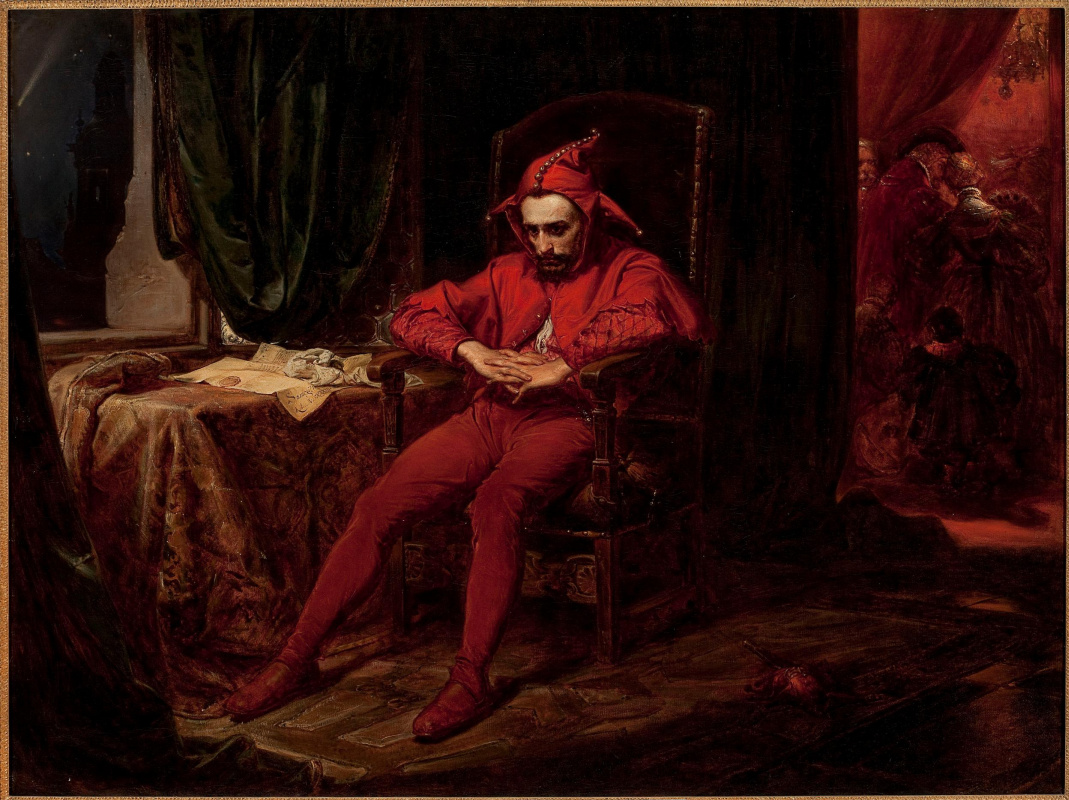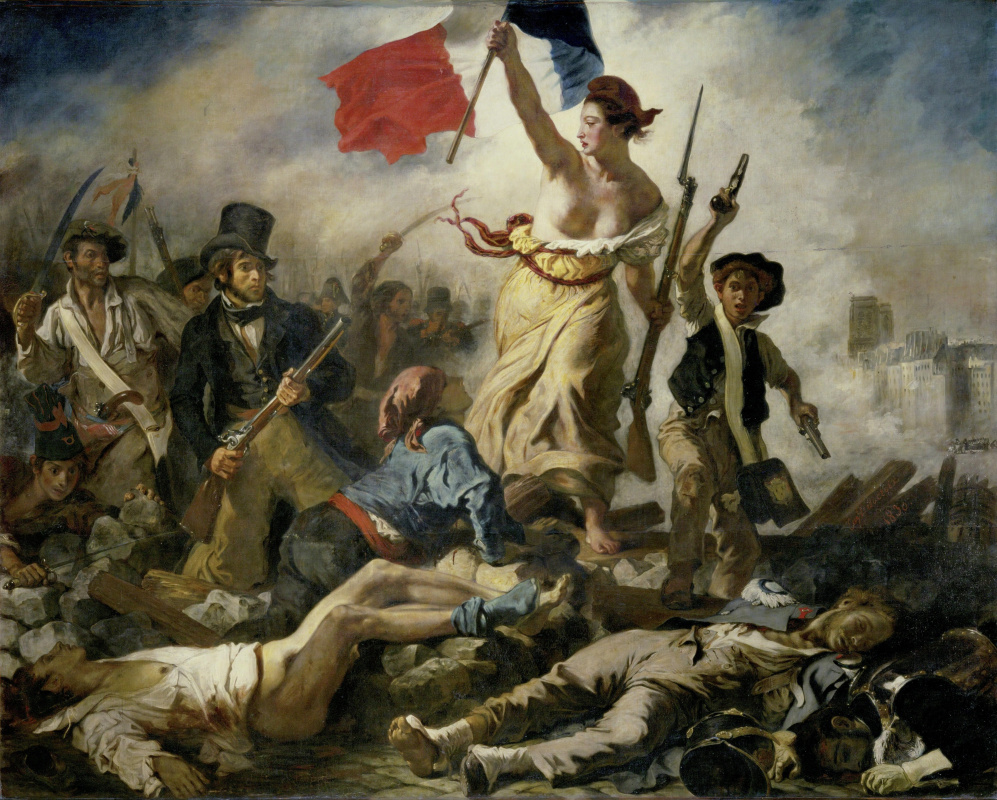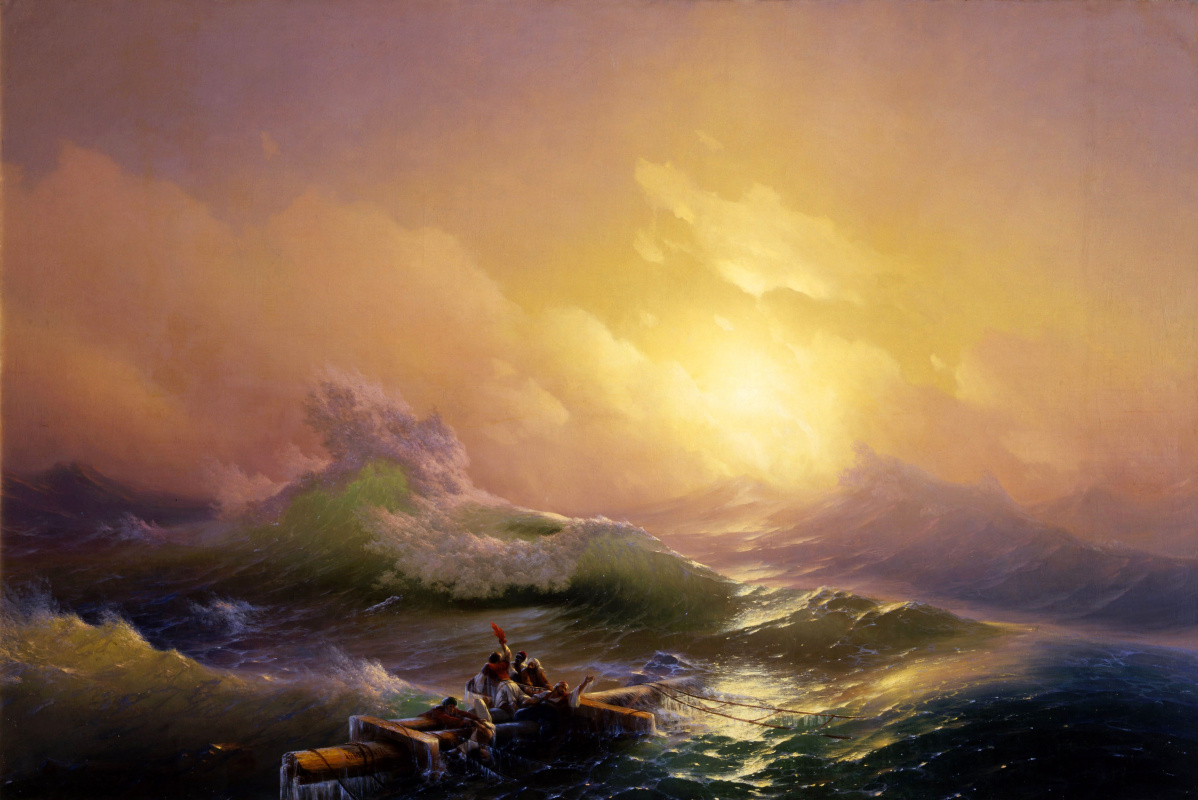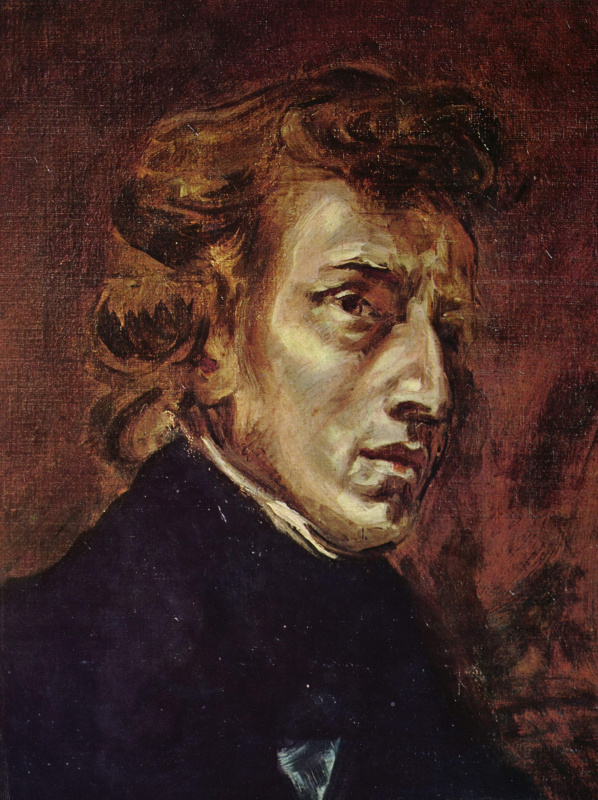Romanticism replaced the austere Classicism
in painting and brought something new with it: emotions, excitement, colours, and distinct expressiveness. Quite often the style of Romanticism is confused with "romantic" images in painting and pastoral scenes. Still, it was a person with all the emotions and a rich inner world which was in the focus of attention of creators of all genres of the late 18th — early 19th centuries — from music to painting.

Stanchik (Court jester Stanislav Guska)
1862, 88×120 cm
The main thing for the representatives of Romanticism in painting is to convey and show the human emotions. They are best manifested in extraordinary circumstances, in unusual moments of life, hence the subjects. That’s why realistically drawn, exciting epic scenes appeared: Biblical and historical subjects, myths, mysticism, events of the recent past, with lively, impulsive movements of the depicted people and their emotions. The landscapes contained a breath of nature (before a thunderstorm!), and portraits — the whole range of feelings. Romanticism in painting is the canvases by Géricault, Delacroix, Turner, Goya, Bryullov, Aivazovsky, Tropinin.
The Birth Of The Virgin
1774, 306×790 cm
The revolution of ideas
The style of Romanticism replaced Classicism with its rules of harmony, restraint and the desire for a pure ideal according to the dictates of History. It was impossible to remain within the framework of the frozen canons of the age of Enlightenment and admire only the ancient beauties and the heritage of Raphael and Michelangelo. The Great French Revolution, freedom, equality, brotherhood, the collapse of bourgeois values, the new teachings of German philosophers with their close attention to the character’s spiritual search… So the artists started painting brighter and bolder in their desire to reveal the inner world of man: there were less geometric schemes and restrained gestures in the paintings; instead, there appeared more colours, emotions and culture.At first, the audience was really shocked: strict lines, theatrical gestures and the cold beauty of angels were replaced by violent, and sometimes even demonic passions! Romanticists pay a lot of attention to "the dark side" of nature, and the phrase "Goya's ghosts" has already become common. But the main thing is that with the help of the emotionality of their living artworks romanticist artists seem to involve the audience into the circle of subjects, and instead of the detached admiration of the picture, there appears the effect of participation.
The raft and stronghold of romanticism.
The "homeland" of romanticism in painting is considered to be France, and the appearance of Théodore Géricault's Raft of the Frigate Medusa at the Salon in 1819, at the prestigious official exhibition of the Paris Academy of Fine Arts, is almost the "birthday" of the style. "Aesthetic revolution" from the composition to the subject and presentation is obvious! The artist depicted the exciting moment of recent history, based on a true story: the shipwreck of a French frigate off the coast of Senegal in 1816, and the tragic history of the survival of 15 of the 140 ship passengers on a small raft.
In Géricault's painting there’s the arrival of the ship "Argus", which the exhausted people saw after 12 days of hardships. Despite the fact that in the end the artist pretty shaded the wounds on the bodies and did not develop the theme of cannibalism, the audience was shocked by the elements of realism and "humanity" of the painting. Géricault's follower and friend Delacroix (who posed for the painting as the … dead), having seen the canvas for the first time, "started running like a madman and did not stop till he reached his own room".
Delacroix became Gericault’s best faithful ally and one of the brightest representatives of a new artistic movement — Romanticism. It was he who created another "canonical" work of this style — Liberty Leading the People (1830). However, the subject of a popular uprising against the monarchy of the Bourbons was rather an exception for the creator, who once said "It’s scary to imagine how many monuments and masterpieces were destroyed by revolutions". But how many were inspired by them! Even Russian creators were among the inspired ones since revolutionary ideas in art turned out to be close to them. Russian artists had a number of reasons to share this path to Romanticism, among which there was a victory in the Patriotic war of 1812, creative freedom in the homeland with exhibitions at the Academy of Arts, travelling and business trips abroad (Bryullov, for example, underwent a "training course" in Italy), and even the emotionality characteristic of Russian people.
Delacroix became Gericault’s best faithful ally and one of the brightest representatives of a new artistic movement — Romanticism. It was he who created another "canonical" work of this style — Liberty Leading the People (1830). However, the subject of a popular uprising against the monarchy of the Bourbons was rather an exception for the creator, who once said "It’s scary to imagine how many monuments and masterpieces were destroyed by revolutions". But how many were inspired by them! Even Russian creators were among the inspired ones since revolutionary ideas in art turned out to be close to them. Russian artists had a number of reasons to share this path to Romanticism, among which there was a victory in the Patriotic war of 1812, creative freedom in the homeland with exhibitions at the Academy of Arts, travelling and business trips abroad (Bryullov, for example, underwent a "training course" in Italy), and even the emotionality characteristic of Russian people.
Liberty leading the people
1830, 260×325 cm
Famous representatives of Romanticism in art
Théodore Géricault, Eugène Delacroix, Honoré Daumier, Pierre Jean David d’Angers, Antoine-Louis Barye, François Rude, John Constable, Richard Parkes Bonington, William Turner, Philipp Otto Runge, Caspar David Friedrich, Joseph Anton Koch, George Inness, Albert Pinkham Ryder, Viktor Madarász, Louis Gallet, Josef Mánes, Piotr Michałowski, Jan Matejko, Orest Kiprensky, Ivanov, Alexander Ivanov, Karl Bryullov, Ivan Aivazovsky
The ninth wave
1850, 221×332 cm
Significant works
— Théodore Géricault — The Raft of the Medusa ("Le Radeau de la Méduse"), 1819. This is one of the first most prominent works of the era of Romanticism— Eugène Delacroix — Liberty Leading the People ("La Liberté guidant le peuple"), 1830. The painting exhibited at the Paris Salon received public recognition, but, being bought by the government, was hidden from it.
— Karl Bryullov — The Last Day of Pompeii (1830 — 1833). The picture perfectly characterizes the style of Romanticism in Russian painting.
The last day of Pompeii
1830-th
, 465.5×651 cm
- You are a layman ... if you think that William Turner is only the romantic character of the movie "Pirates of the Caribbean"! Briton William Turner is one of the best representatives of romanticist artists. However, the maritime theme did not remain without his attention: one of his famous artworks – "The Fighting Temeraire tugged to her last berth to be broken up" (1838)
- You are an expert if you ... can straight off recognize the face of the writer Nikolai Gogol "in the crowd" on the canvas "The Appearance of Christ Before the People" (1837 – 1857) by Alexander Ivanov. Or if a sudden visit of your best mother-in-law brings out the name of the painting "The Last Day of Pompeii" by Ivanov's disciple Karl Bryullov.
What a story!
The most well-known portrait of the Polish composer and pianist Fryderyk Chopin created by his friend Eugène Delacroix, is only part of the picture! Alas, the double portrait Frédéric Chopin and George Sand in its original form does not exist since 1880, when it was cut in two, according to various sources, either because "the greedy owners wanted to sell it for a higher price", or "at the insistence of George Sand."The portrait of a writer and a tormenting muse listening to Chopin’s play "behind the scenes" is kept in the collection of Ordrupgaard (Copenhagen, Denmark), and the portrait of Chopin, according to the will of the owner, was taken to the Louvre (Paris, France) in 1907. The original sketch
by Delacroix with two figures on one sheet is also kept in the Louvre.

































